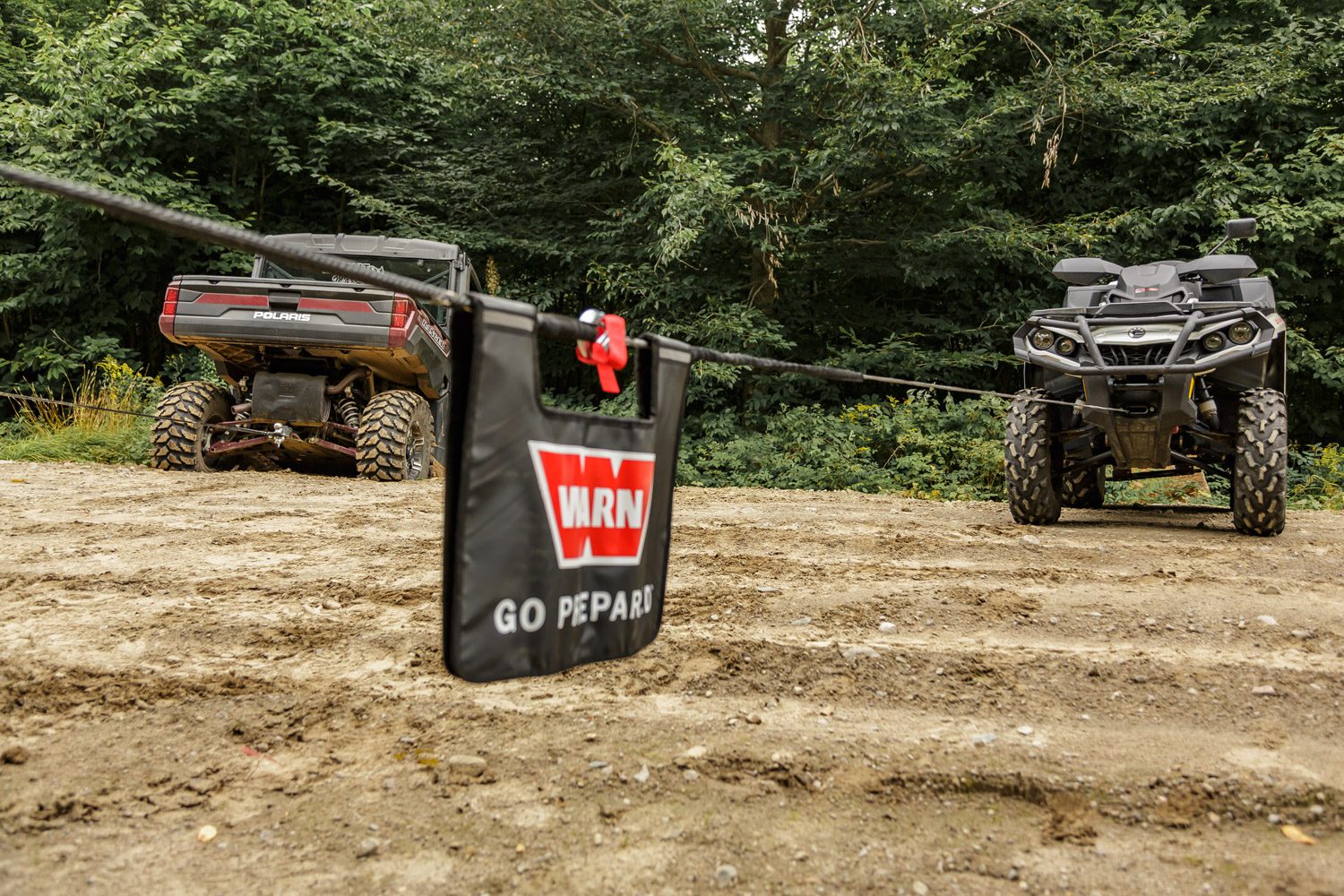Winches can be dangerous when misused or used without proper safety precautions. From where you stand when a winch is under load to what not to do with your rope or winch cable, there are many important factors to consider when setting up and using your winch. Of course, there are many things you can do right or wrong, and we are going to show you some of the ways you can use your winch correctly. Our goal is that with our experience and advice, you can use your winch safely and adequately.
Warn is a manufacturer that no longer needs presentation. It offers a wide variety of winches but also several accessories to facilitate their use.
Wear gloves at all times. Almost every winch manufacturer will sell you sturdy leather gloves that will help protect your hands when using your winch. However, suitable work gloves will do the trick. You should get into the habit of grasping the hook strap rather than the hook to keep you safe when you reach the critical point in the last moments of the rewinding. We also recommend keeping a distance of more than an arm’s length between your hands and the winch while it winds into the roller guide.
You should never grab a winch cable with your bare hands. Thorns and other debris can dig into the synthetic rope, and steel cables can fray, causing severe injury to your hand. Your fingers can also be pinched between the line and guides. The results can be serious and very painful. You could lose a finger or even your hand if it gets stuck in the winch. A broken wire on a steel cable can open your hand like a sharp razor, thus requiring several stitches.
Some winching accidents are simply caused by ignorance. A winch cable or rope must be wound with a certain tension for proper winding. Just release the winch drum brake and fully unwind the cable. Then all you have to do is proceed with its mechanical rewinding by applying adequate tension to evenly and adequately position the line on the drum.
Otherwise, it could damage the cable and the winch. The winch could be unusable in a worst-case scenario because the rope or steel cable would not come loose from the drum. The cable and rope should also be rewound periodically (under load) to ensure appropriately stacked.
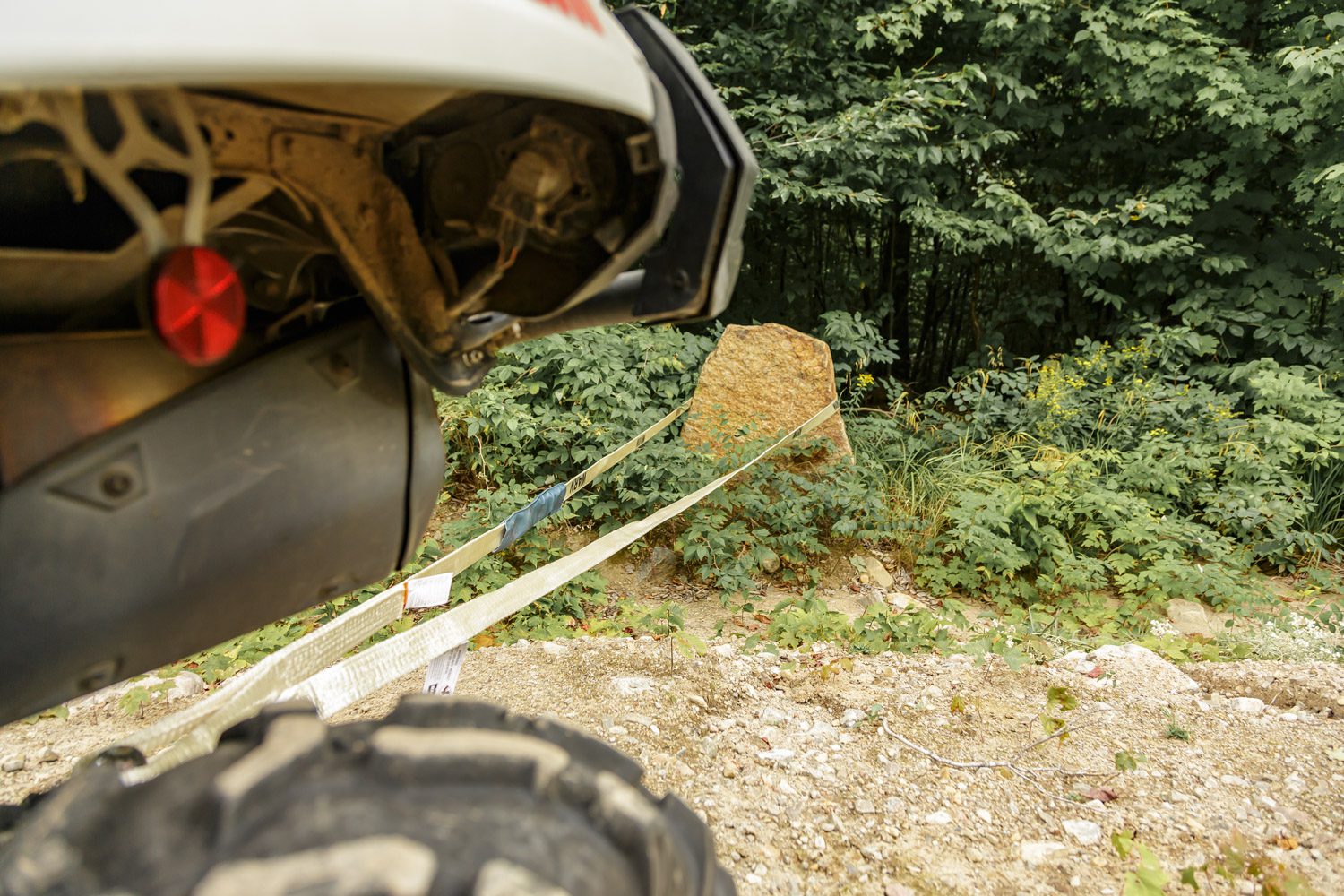
Safe winching method:
When your vehicle is in a bad situation, release the drum brake of your winch and go to the anchor point that you have previously determined by pulling your cable by the hook strap (if you have one) or by the hook.
It is not necessary to fully unwind the winch cable. However, there may be occasions when your winch cable is not long enough. In a case like this, a Spydura Warn extension is a time-saving alternative time that will allow you to reach a more distant anchor point.
Never wrap your winch cable around a tree. Whether synthetic or steel, the winch cable will damage the tree, killing it in the process. Doing this would have a tightening effect when pulling, which would damage the tree. It also might be so tight that you won’t be able to pull it off. Remember that one of the reasons you are on the trail is to enjoy nature and not destroy it.
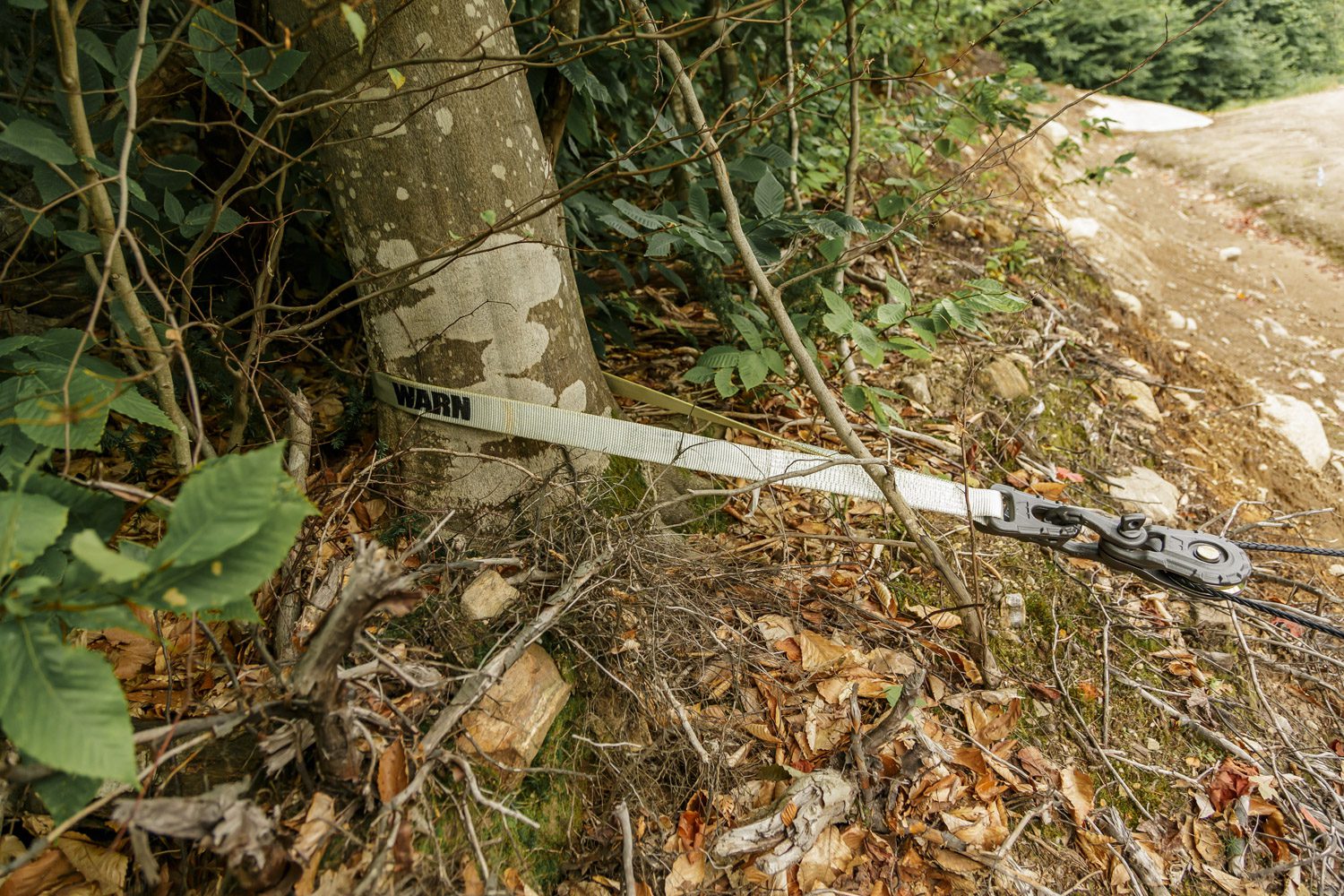
The correct way to use a tree as an anchor point is to select a large tree and use a wide WARN tree guard strap around the tree’s base. Note how the WARN D-ring shackle goes through both ends of the strap and hooks onto the winch line. D-ring shackles are designed to hold a 90-degree load. You need to position it so that the thickness of the cross-section of the shackle and pin can withstand the shear load. Do not over tighten the shackle bolt and allow 1/4 turn free of its final stroke to facilitate loosening.
A tree is stronger closer to the ground. You also don’t want the strap to slip off the tree, so if it has an inclined angle toward your winching line, look for another tree. Winching several feet above the base of the tree could create enormous leverage on the tree’s roots. In an extreme case, the tree could be uprooted, killing it and possibly causing you severe injury if it accidentally falls on you. There are times when you might want a raised anchor point, but this tree is not the one to use for that.
In exceptional situations, like on a mountainside, you will have to use a higher anchor point to avoid your cable rubbing on abrasive and sharp surfaces such as rocks.
When adequately secured your cable, shackle, and strap, return to your machine to engage the drum clutch. Start your vehicle, put it in neutral, and turn off all accessories. If you have the possibility of having a remote control for your winch, use it to proceed with the winding of the cable, ensuring that it winds properly until a small tension. Then stop the process.
Use a specially designed WARN winch damper or a heavy blanket that you install on the cable midway between the winch and the anchor point. It is a great way to reduce the risk of injury if a steel cable breaks. The weight of the damper will pull the line down if it breaks, making it hit the ground rather than people. This technique also absorbs the energy stored in the cable. However, you will have to reposition the damper at the 1/2 portion of the cable during the winching operation.
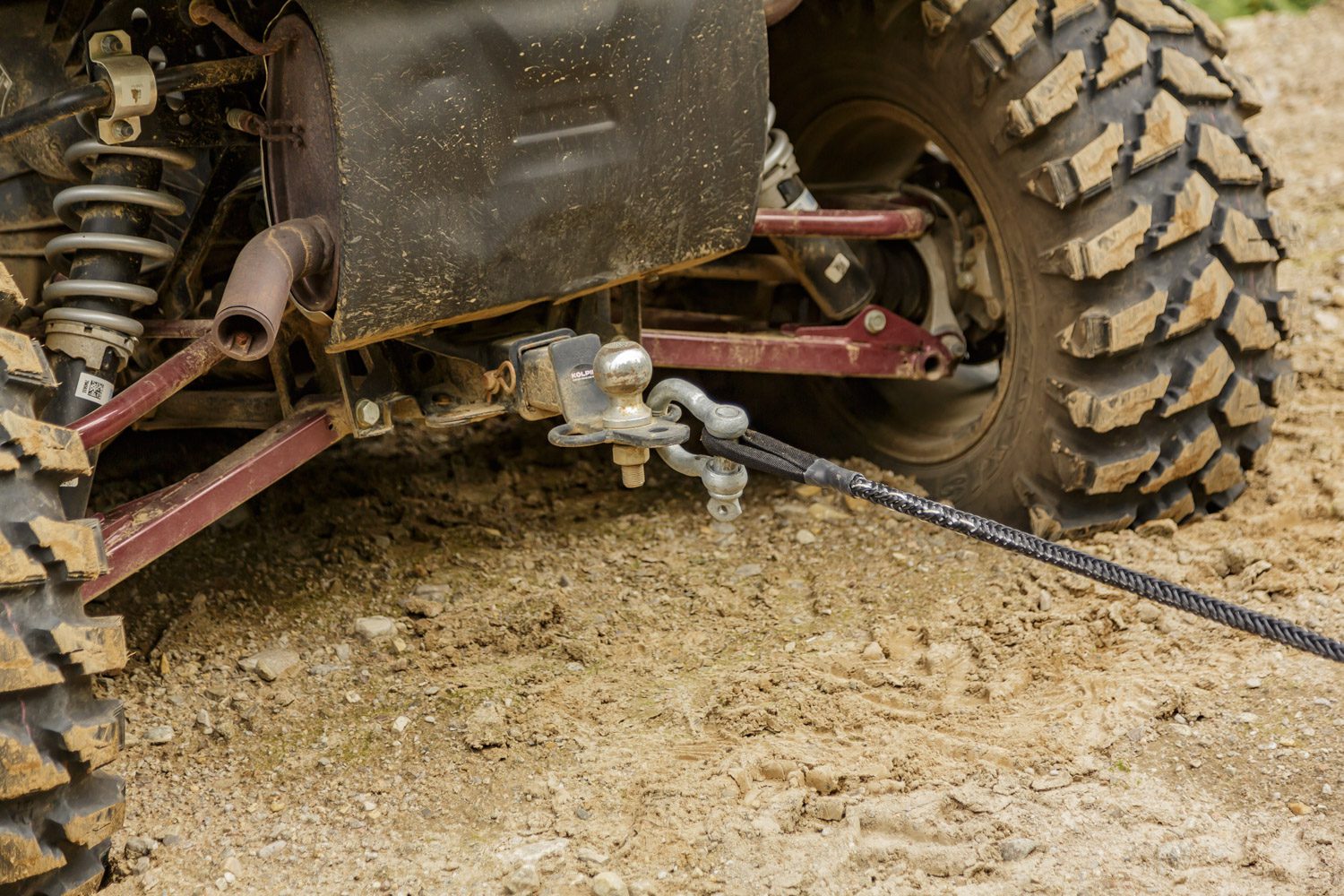
Plan ahead. Standing near a loaded winch cable is dangerous. Never straddle a winch line (for obvious reasons), and when winching, avoid standing between the vehicle and its anchor point. Anyone not involved in the winching operations should stand behind a vehicle, rock, or tree and keep a safe distance from the cable.
Resume winching at intervals, as small breaks will allow your vehicle’s battery to recharge and will at the same time prevent your winch from overheating. Remember that this is not a race against time, and you need to take all the necessary time to complete the winching. You can also provide additional assistance by slowly driving the winched vehicle while pulling and keeping constant cable tension.
When your vehicle is out of its precarious situation, put the transmission to Park and apply the handbrake first, then release the tension on the cable. You can now remove the accessories that have been useful for your winching, and you will be ready to go back to the adventure.
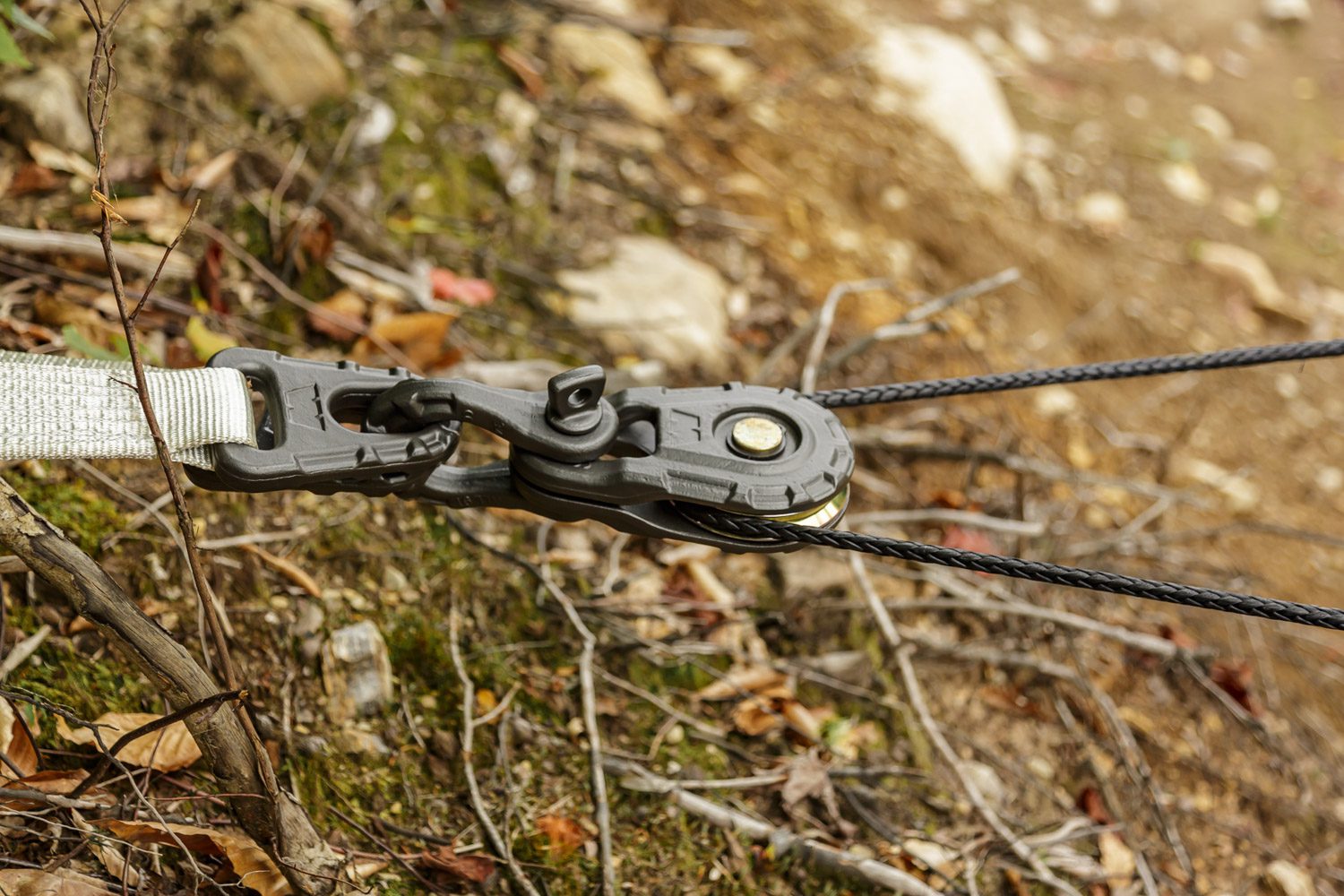
WARN snatch block
A snatch block is a sturdy pulley inside a metal case. It is primarily designed for handling heavy loads, functioning as a pulley point that can redirect the pulling direction of a winch line. Note that it is also possible to double the pulling capacity of a winch.
Snatch blocks are used to increase the lifting or pulling capacity of winches. It is common for this method to produce a 100% increase in pulling or lifting capacity. However, beware of the extra force this has on the attachment / anchor points.
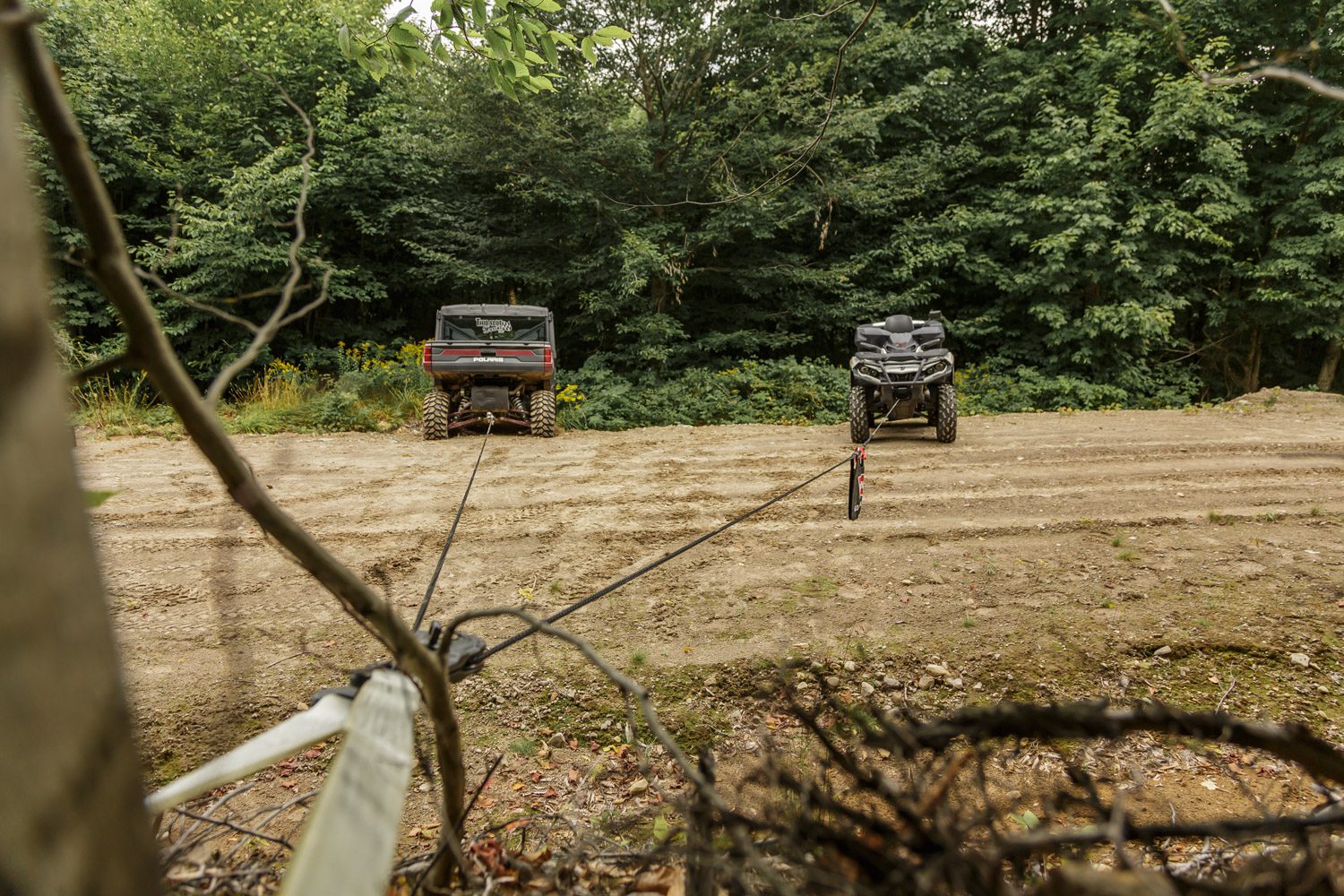
Snatch blocks also allow you to change the direction of a winch cable by shifting the anchor point, allowing you to pull in a three-point motion. Robust and durable, snatch blocks are ideal for transferring loads over short distances and are commonly used in recovery situations.
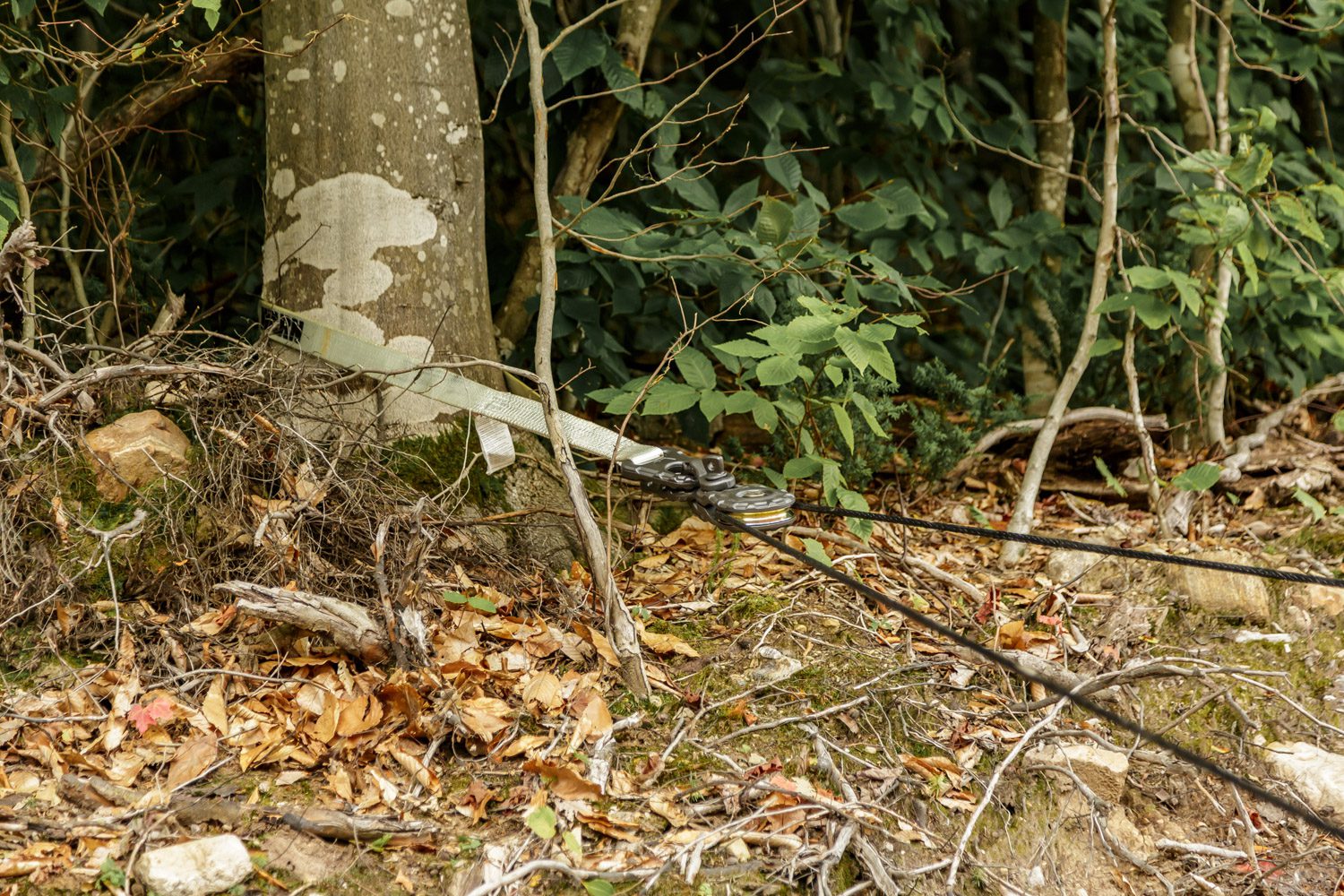
When used in conjunction with a winch, the snatch block can significantly increase the winch’s capacity, allowing for a smoother and easier winching process.
What we have presented are simple ground rules for safe winching. Remember that every situation, while it may seem similar to others, requires a period of reflection on its proper course of action. It is not a task to be taken lightly, and your constant focus on safety is required. Finally, you will agree that the right equipment will make a big difference in the success of this delicate operation.


